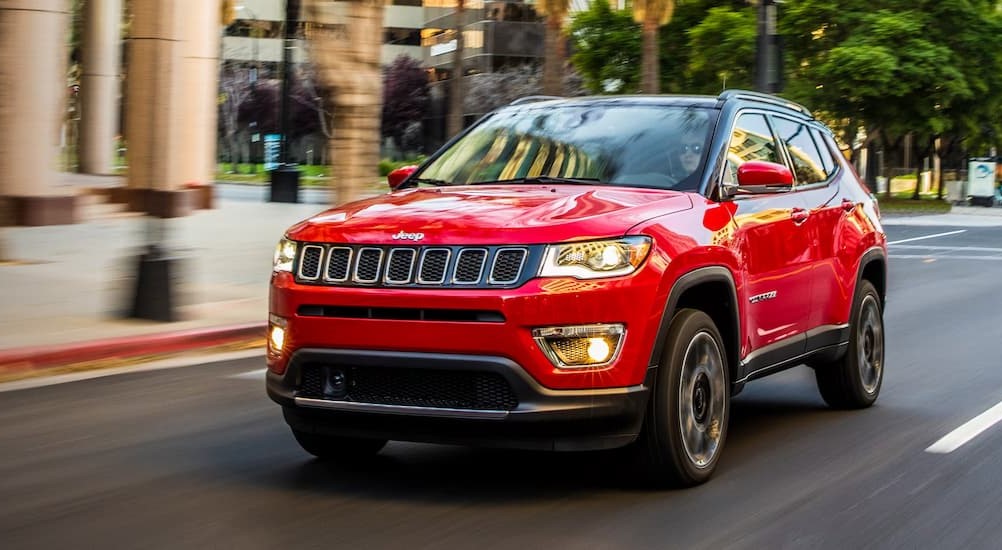Keeping your vehicle running factory new may seem as easy as taking care of regular maintenance items like oil changes and tire rotations, but it’s also important to keep an eye out for minor problems that can pop up, like headlight replacement and addressing that annoying warning light that won’t turn off. Owning a newer car can eliminate some of the need for self-diagnosing mechanical issues. Your local dealership or repair shop can hook up your car to a diagnostic machine and find the source of the problem much faster than someone relying on YouTube videos or a neighbor’s advice.
Despite the availability of better diagnostic tools, car owners should keep an eye out for smaller issues: issues that might seem more like inconveniences that don’t call for immediate attention. A small chip in your windshield doesn’t warrant the same urgency as a sudden knocking sound coming from the engine, but left untouched, these seemingly minor problems tend to grow into bigger–and more expensive–headaches. Before you know it, you’re looking at a costly repair. Shelling out that extra cash won’t feel so great if you know you could have intervened sooner.
Ignoring small repairs can also compromise your safety and driving enjoyment. We spend tens of thousands on our vehicles and we deserve to enjoy driving them. If you’re craning your neck to see through a dirty windshield or feeling self-conscious about the inch of mud caked in your wheel wells, then your car will slowly become a source of embarrassment. Consider prioritizing these four common car maintenance issues right when they appear instead of procrastinating; chances are, you’ll save yourself a bigger headache down the line.
Issue #1: Burned-Out Headlight Bulbs
The kids love a game of padiddle to pass the time on a family road trip, but when you’re the one driving around with a burned-out headlight, you’re setting yourself up for trouble. First–and most importantly–it’s incredibly dangerous since other drivers can’t see you well and the road ahead of you isn’t illuminated evenly or properly. Second, it’s illegal in all 50 states. If you get pulled over, you’re probably getting a ticket. The best-case scenario is a police officer might write it up as a correctable violation, allowing you to fix it and avoid paying the fine.
Unfortunately, scheduling a time to get your headlight bulb replaced is inconvenient, and most folks either don’t know how to DIY it or simply can’t find the time to learn. The result? You procrastinate and take your chances. Don’t fall for the narrative that having a burned-out headlight is OK. On a dark, low-visibility night, you increase your chances of an accident. Not only that, but other motorists might mistake you for a motorcycle.
The best advice: make an appointment at your dealership and keep it. A factory-certified technician can determine whether both bulbs should be replaced and they’ll use genuine OEM replacement parts so you can count on them to work properly.

Issue #2: Windshield Chips and Cracks
Picture this: you’re cruising down the highway listening to your favorite podcast. Suddenly, a large dump truck motors into your lane ahead of you. The lane change shakes up some debris in the truck bed and a hailstorm of dust and debris tumbles out, heading right for your windshield. Before you can react, you hear it–CRACK–a small starburst appears right in your line of vision, which triggers your subconscious to play that annoying Safelite jingle on repeat.
If you poll 100 drivers, 99 will probably tell you that windshield cracks are among the most aggravating problems that can come up. Will your insurance cover it? Probably not. Is the crack going to spread if you don’t fix it? Probably yes. Left untouched, most hairline cracks will eventually spread and when that happens, you compromise visibility, set yourself up for yet another fine if you get pulled over, and substantially increase the odds that you’ll end up having to replace the entire windshield.
The best advice: Most dealers offer windshield repair, so the second a crack appears, make a plan for having it fixed. Doing so at a dealership allows you to easily schedule a complete replacement if necessary, plus you can take care of any other scheduled service you’ve been putting off.
Issue #3: Persistent Warning Lights
What’s more stress-inducing than starting your car and seeing a bright red or yellow light pop up on the dash display? These warning lights are scary: icons of the engine, a thermometer, or a giant exclamation point are just a few of the common lights manufacturers design to appear when drivers need to act. Your owner’s manual offers a handy reference tool, so you know what you’re dealing with, but not all warning lights are created equal.
One of the most common warnings is the tire pressure light. Over- or under-inflated tires are common, especially in climates with four different seasons. This common warning light is also the one many drivers choose to ignore. Whether they’re uncomfortable using the gas station air compressor, or they don’t know how to read a tire pressure gauge, for some reason, most drivers put off inflating their tires, which is the last thing you should do. Improper tire inflation makes for bad drive quality, can negatively impact your fuel economy, and creates the risk of a blowout.
The best advice: If a warning light signals on your dash, find out what it means by checking your owner’s manual, then promptly take the next step, whether it’s an easy fix–like stopping for gas–or more complex, like scheduling a service appointment to diagnose the engine light.
Issue #4: Empty Windshield Washer Fluid
Snowy days come with many potential perils for drivers, from slippery roads to hidden patches of ice. While you can’t do much about the weather, you can prepare yourself for the worst with a few preemptive actions. The simplest by far is to keep your windshield washer fluid topped off at all times. Driving behind a car that’s spitting dirty snow and road salt will coat your windshield in debris within seconds. The constant barrage of that salt, dirt, and snow mixture is often too much for your wipers to tackle on their own, which results in smudges that are hard to see through. Also, wipers can’t help with the build-up of ice that happens during a storm.
Not all windshield washer fluid is alike; choosing the right fluid for the winter season is essential, as is making sure you have a new set of wiper blades. Inclement weather requires preparation, as does driving in sunny weather after a storm. As the snow melts and puddles, the film that ends up on your windshield is even harder to see through when the sun is shining and the sunlight is reflecting off of bright white snow. Even if you don’t live somewhere with snow, other kinds of weather can create just as many visibility problems for you.
The best advice: Fill your windshield washer fluid tank with washer fluid designed for your weather. Winter washer fluid contains a de-icer that works in sub-zero temperatures. Some washer fluid also has chemicals that help repel water. Bonus advice–keep an extra bottle in your trunk for emergencies.
Routine Maintenance Always Pays Off
None of us can avoid the occasional curve ball, but when you practice responsible daily maintenance and stay alert to any changes in your vehicle, you’ll set yourself up for stress-free driving. Simple efforts, like topping off fluid levels and keeping your tires properly inflated, not only keep you safer but decrease the odds of you facing a costly repair down the line. Many buyers don’t bother reading their vehicle’s owner’s manual, but doing so is the best way to learn what you need to do to keep your vehicle running factory new. Next to your home, your car is probably the most expensive purchase you’ll ever make. If something feels off, sounds wrong, or you see the not-so-warm glow of a warning light, then get to your local dealer as soon as possible; your diligence and quick response will pay off in the long run.



